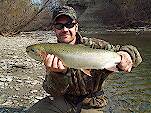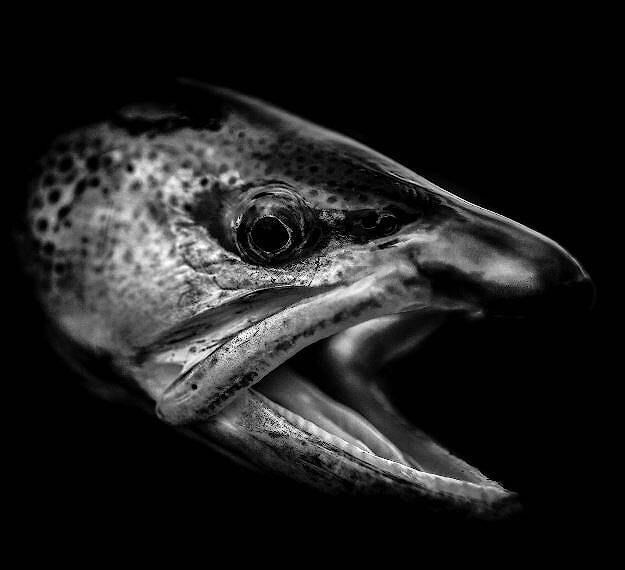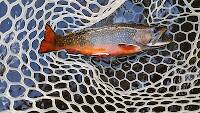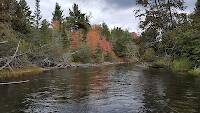
Hex Mayflies
Hexagenia limbata
The famous nocturnal Hex hatch of the Midwest (and a few other lucky locations) stirs to the surface mythically large brown trout that only touch streamers for the rest of the year.
Featured on the forum

With a bit of help from the microscope, this specimen keys clearly and unsurprisingly to Hydropsyche.

Troutnut is a project started in 2003 by salmonid ecologist Jason "Troutnut" Neuswanger to help anglers and
fly tyers unabashedly embrace the entomological side of the sport. Learn more about Troutnut or
support the project for an enhanced experience here.
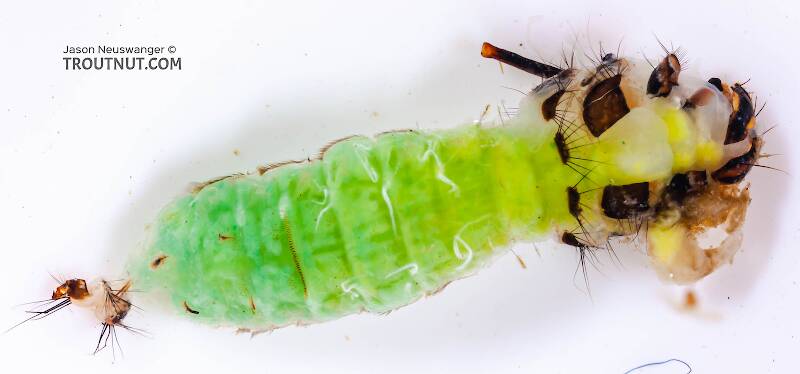
The green blob contained in this case is a pupa in the early stages of transformation from larva to the final stage we generally picture and imitate. This specimen and several like it were fixed to a rock I picked up, and each one had the front of its case sealed off, protecting the helpless pupa from predation. It's neat to see the insect part-way through such a radical transformation.
It was very hard to extract this thing from its case, so there's a bit of extra goo near the head from where I accidentally punctured it.
It was very hard to extract this thing from its case, so there's a bit of extra goo near the head from where I accidentally punctured it.
Powderfinge on Jan 8, 2017January 8th, 2017, 10:52 pm EST
what pattern/colors do u find effective? thanks
PABrownie on Jan 9, 2017January 9th, 2017, 12:57 am EST
Jeez man, I already responded to your other grannom post, but I didn't realize you were talking about the j! Seriously, grannom soft hackles are freakin killers !
Feathers5
Posts: 287
Posts: 287
Feathers5 on Jan 9, 2017January 9th, 2017, 2:35 am EST
I use a size 16 gray hackle peacock. You may be able to use a size 14 early in the hatch. Just like PABrownie says, "they're freakin' killers.
Wbranch on Jan 9, 2017January 9th, 2017, 10:57 pm EST
Please do a Forum search for prior Grannom threads there are likely pages of posts.
Catskill fly fisher for fifty-five years.
Martinlf on Jan 10, 2017January 10th, 2017, 1:26 pm EST
Or just look below at "Related Discussions."
"He spread them a yard and a half. 'And every one that got away is this big.'"
--Fred Chappell
--Fred Chappell
Quick Reply
Related Discussions
Topic
Replies
Last Reply


